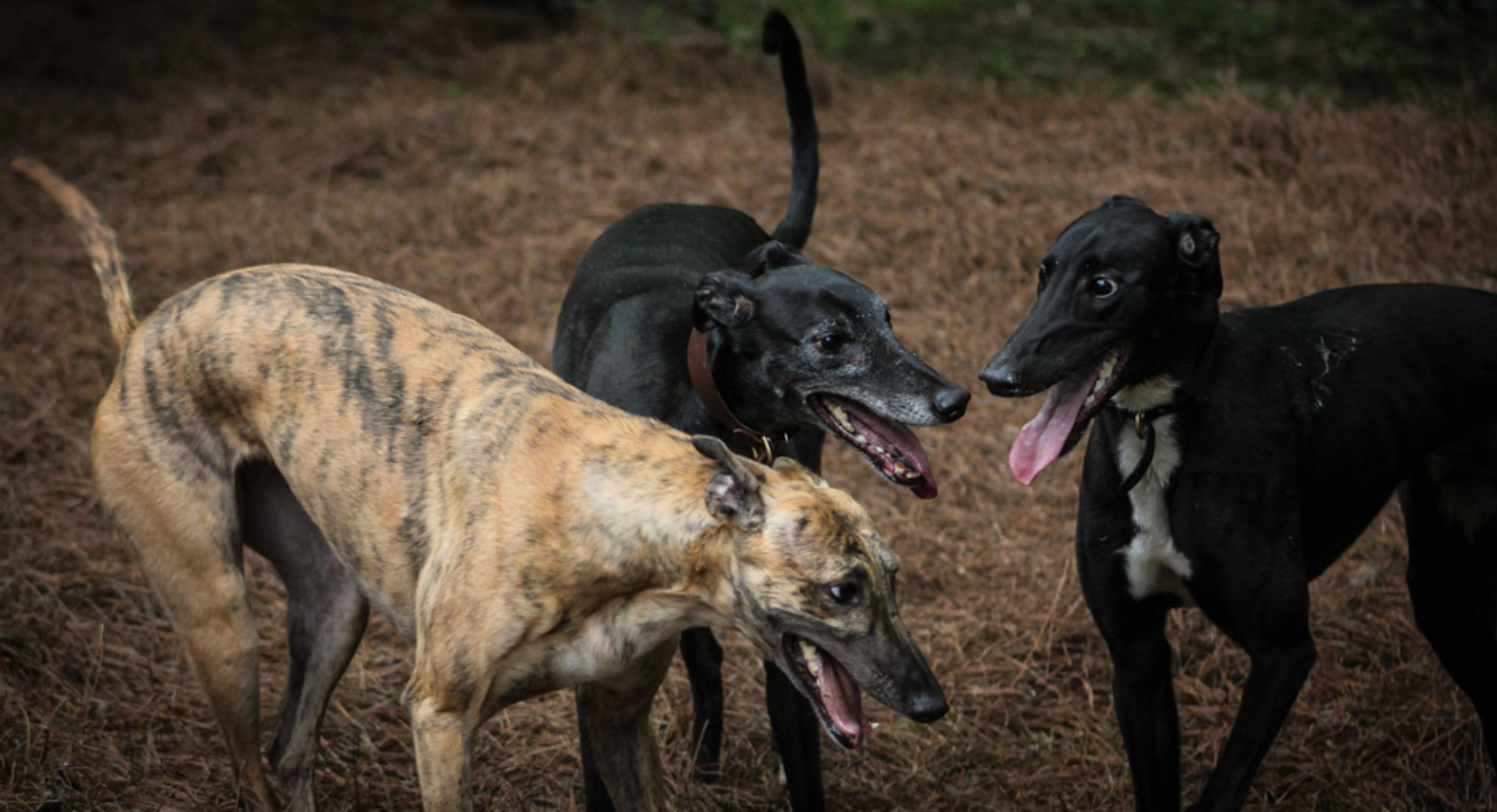A lot of my blog ideas come from previous posts. I do research on a topic and then think about my experiences. I think that gives this blog a distinct feel and I hope you all enjoy it as well. The other day I way touching on some of the myths people believe about racing Greyhounds and their lives on the track. Separation anxiety popped into my mind. In addition to hearing that skittish dogs are products of abuse, I have also heard and read that the anxieties or issues Greyhounds have in their adopted homes are products of what might have happened at racing kennels.
Today I want to dive into my dogs’ separation anxiety (SA) journey and how it correlated to mistakes I made and not problems in their kennel lives or mistreatment.
In my “Myths Busted” post I compared a racing kennel to a military school. I think this is the most accurate way for many adopters to understand their Greyhound’s previous life if the adopter has never been to a kennel or racetrack. Dogs are creatures of habit and, due to that tendency, Greyhounds do very well in the racing kennel environment. Kennels have daily routines that do not differ greatly from day to day. This is very comfortable living for most dogs. Once the decision has been made to retire a racing Greyhound and send them to an adoption kennel, their lives change but generally speaking they continue with a stable routine. Sometimes the retired Greyhounds have a long trip to the adoption kennels but once there the Greyhounds enjoy a routine that includes exercise, interactions with humans and Greyhounds, and meals.
The big change comes to the Greyhounds’ routine when they are adopted. One change is they are no longer around other Greyhounds (unless there are Greyhounds in their new family). These dogs have spent their entire lives with other Greyhounds and are now alone. They may also have more free time—they can wander around in the yard or house. They most likely are getting less exercise than previously, possibly increasing their anxiety. Finally the biggest change and the biggest issue is the over-abundance of affection from their new owner(s).
All of these changes influence the risk of separation anxiety in these dogs, but the biggest issue is the amount of affection we give to our newly adopted Greyhounds.
When Clint and I adopted Jethro I had firm opinions that Jethro was going to be crated and sleep in our sunroom that was close to out bedroom but not in it. Big mistake! The first few nights Jethro howled and I went into the sunroom every time to comfort him. This was my first mistake and biggest mistake. It would have been better for Jethro to be crated in our room than for me to continue to check on him. I know this is what triggered his separation anxiety. And it was not easy to undo.
Jethro had horrible SA. He chewed through multiple metal and soft crates, escaped through the sunroof of my SUV at a field trial, escaped from a kennel run with a d-ring, he learned how to break down a metal crate and would leave the front panel off to chew up our window seal and blinds. I felt that I had created a monster! I had no clue how to help him. I consulted my friend Jennifer Bachelor and her blog. By this time it was clear that the crate was not working for Jethro. We began baby gating Jethro in the kitchen—we could make his area smaller than a bedroom but larger than a bathroom. We continued to leave the TV on for him and a kong. We also hired a dog walker to check on him. And we got another Greyhound.
The process of Jethro’s SA rehab took a long time. He is still not a fan of the crate but deals with it for car rides and field trials. He does have the run of the house when we are away. I do NOT feel that Darla’s arrival fixed his issues, but it did help. I would not recommend getting another dog to fix SA, as you have to deal the dogs’ issues and training issues, getting him stable before adding to the pack—I would have lost my mind if I had two dogs like Jethro!
After my experience with Jethro, I looked at Darla’s arrival completely different. If I was home and not playing or training Darla, she was crated. I made the crate fun—she got raw bones, feet, and hooves that she was not allowed out of her crate. She slept on a dog bed in my room. I did NOT shower her with affection: she had to earn it. Darla and I had a “working relationship” for about a year. It seemed like she respected me for giving her stability and security and over time we developed a relationship of best friends. I do not regret one aspect of Darla’s training and she is a very balanced Greyhound and extremely secure. Sashi was also trained in this manner—he likes his crate so much that he will hang out in there when we are home!
You can have too much of a good thing. We have to remember that saying when adopting our Greyhounds. We have to focus on a routine that we set and they live by. We must exercise and train our Greyhounds—just because they lie around does not mean they do not need stimulation! And we have to remember that affection will come but security is much more important and what we should strive for.




























